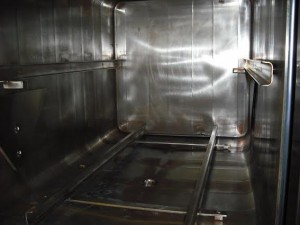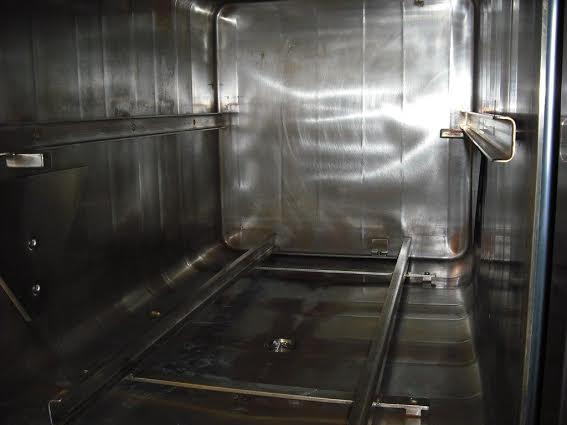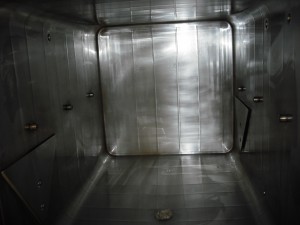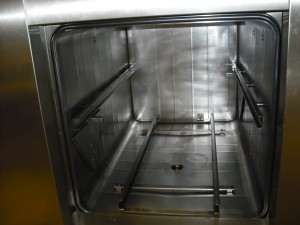Hygienic Cleaning of Stainless Steel Autoclaves
Objective of the project:
To remove various surface contaminants and staining from the inner surfaces of stainless steel autoclaves.
Observations:
The Autoclave equipment used are manufactured from 316L Stainless Steel, which is an Austenitic grade of Stainless Steel, with the inclusion of Molybdenum, to create a highly corrosive working surface.
From first observations, it was apparent that the inner surfaces of the Autoclave Units were covered with a reddish-brown or golden appearance. This surface contamination is a combination of ferric oxide and hydroxide, with a probable trace of magnesium surface particles.
The following two photographs were taken before treatment had began
INSIDE OF AUTOCLAVE


EVIDENT PATCHES OF FERRIC OXIDE ( Rouge)
The Method:
To remove ferric oxide from a contaminated surface, it has to be firstly, chemically dissolved and then re-passivated to create the required surface corrosion protection.
Stainless Steel is “stainless” owing to the fact that the constituents of its alloy composition form a thin, protective, tenacious and transparent oxide film that protects it against destructive corrosion particles in aqueous solutions. This film is composed of Chromium oxide and is said to make the steel “passive” against corrosion. Passivation is a chemical process that quickly and effectively restores the protective oxide layer of the material.
To restore the material to its original form, we used Wilowchem 60 to dissolve the ferric oxide contamination and a product called Willowchem Biopass to passivate the material after complete dissolution has taken place.
The Result:
After treatment with Willowchem 60 and rinsing, the Willowchem Biopass solution was applied to the inner surfaces of the Autoclave units.
The complete dissolution and removal of the surface contaminants was observed and all surfaces were restored to their original metallurgical condition, with a completed and fully reformed Chromium Oxide Passive layer.
The following two photographs were taken after treatment was completed
AUTOCLAVE AFTER CLEANING WITH WILLOWCHEM PRODUCTS


Conclusions:
Inspection of the internal surfaces after treatment with Willowchem 60 and Willowchem BioPass showed the removal of all ferric oxide and surface containments and restoration of the protective passive layer.
Recommendations:
Maintenance of critical systems and their state of passivity is crucial to their long term condition and effect on product quality. Systems should be inspected routinely to ensure that rouge or corrosion products are not building up or leaking into the system. Regular inspection and record keeping practices can assist in the evaluation of critical systems and the need for precision cleaning and passivation. Removal of rouge deposits is important in the preparation of a system to produce highest quality products and for the subsequent passivation of the surface. We recommend critical systems should be inspected on a 3 to 4 month cycle and that corrosion removal and re-passivation should be scheduled as and when required from the inspection outcomes. However if the autoclave is in use more frequently, this can be revisited.